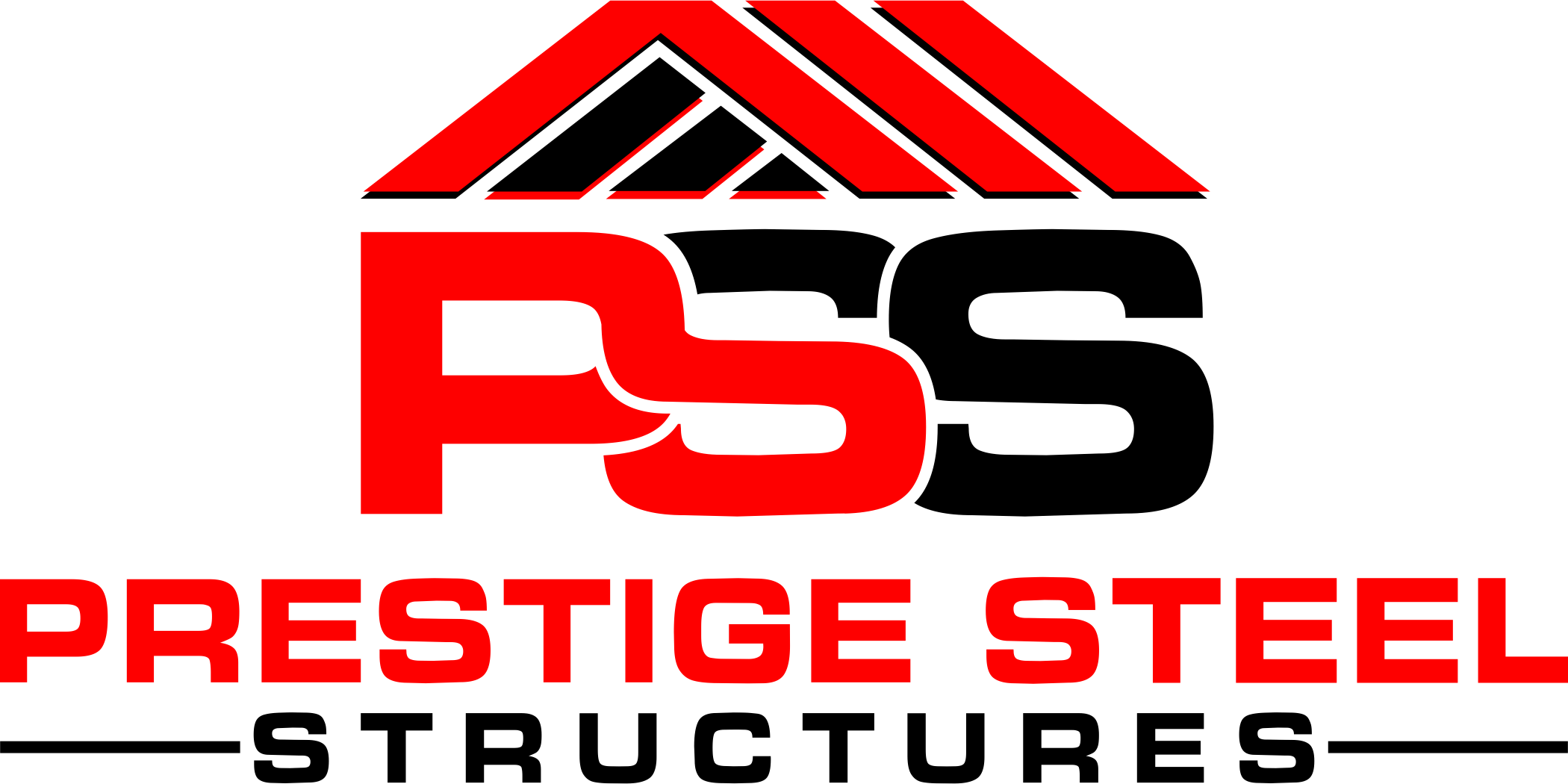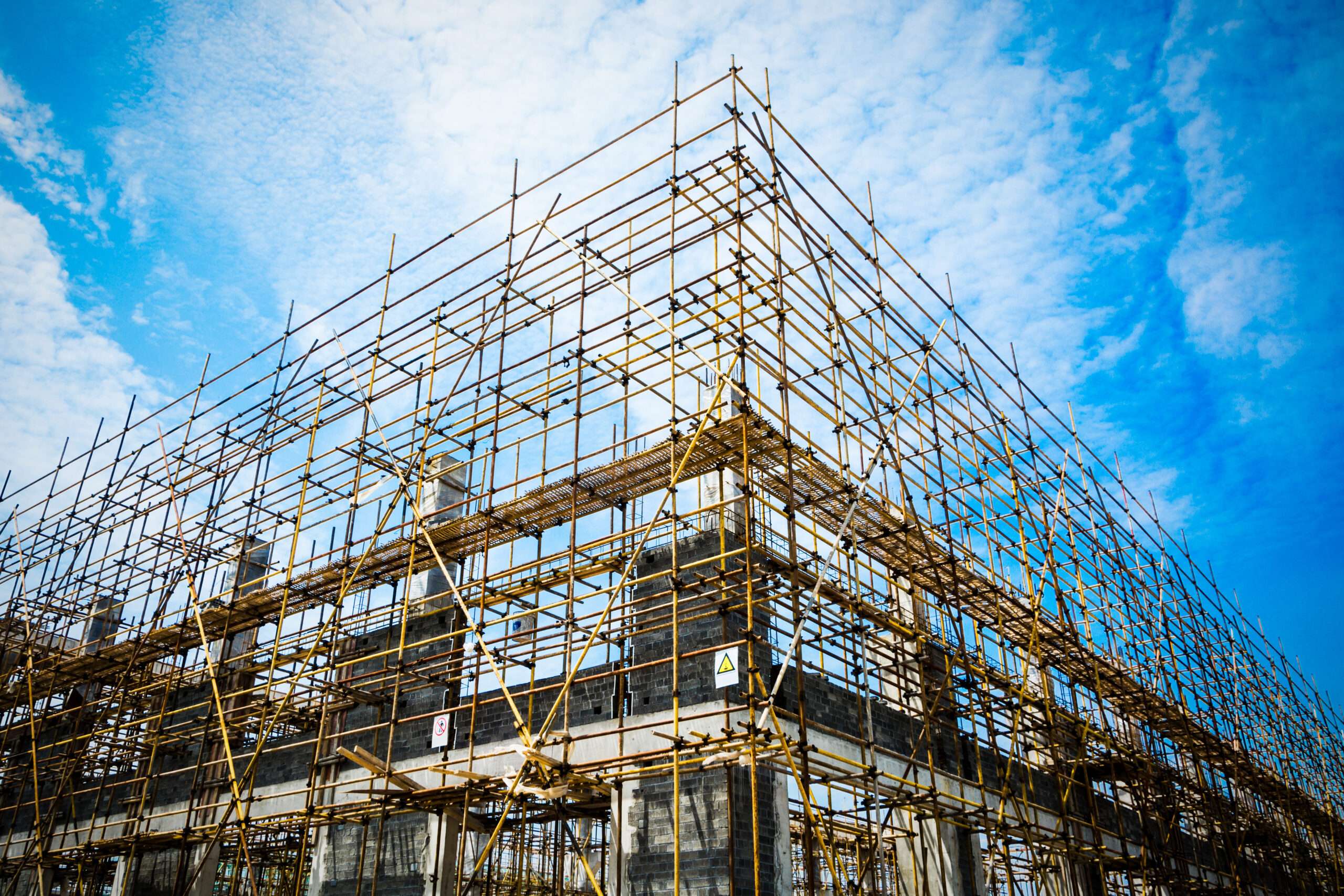For centuries, both wood and steel have played prominent roles in the construction industry. Wood, a naturally abundant resource, has been a traditional choice for building structures due to its relative ease of access and processing. Its aesthetic appeal and familiar warmth have also contributed to its enduring popularity in residential construction. However, steel, a man-made material, has emerged as a formidable competitor in recent decades.
Steel’s inherent strength, durability, and versatility have made it increasingly popular for a wide range of building applications. From towering skyscrapers and expansive industrial facilities to agricultural buildings and even modern homes, steel is revolutionizing the way we construct our world. This growing preference for steel is driven by its numerous advantages over wood, which will be explored in detail throughout this discussion.
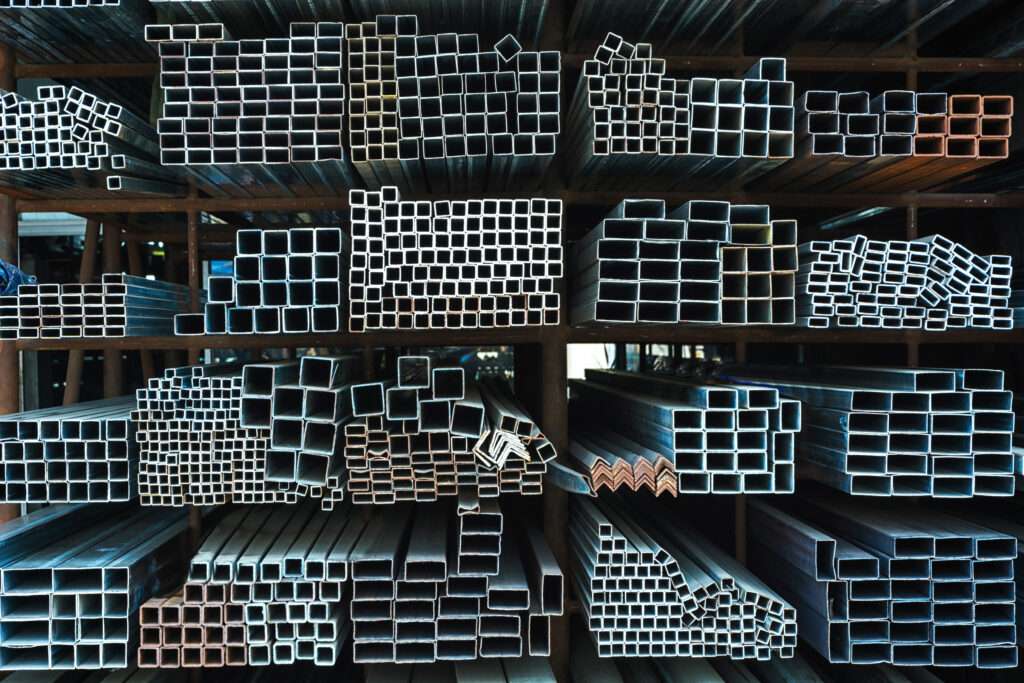
Superior Strength and Durability of Steel
Strength-to-weight ratio
The strength-to-weight ratio is a crucial concept in construction, as it compares a material’s ability to bear weight (strength) to its overall density (weight). A high strength-to-weight ratio indicates that a material can support significant loads without being excessively heavy. Steel boasts an exceptional strength-to-weight ratio compared to wood. For instance, some high-strength steel grades can be up to ten times stronger than common construction lumber while weighing only a fraction of the amount. This translates to several advantages for steel buildings:
- Reduced foundation requirements: Due to the lighter weight of steel compared to wood for achieving similar structural capacity, steel buildings often require less robust foundations. This translates to cost savings during construction, particularly for larger projects.
- Easier construction: The lighter weight of steel components makes them easier to handle and assemble on-site. This can significantly reduce construction time and labor costs compared to working with heavier wood beams and trusses.
Resistance to natural disasters
Steel’s remarkable strength and inherent flexibility make it exceptionally resistant to the destructive forces of nature. Here’s a breakdown of its advantages in specific scenarios:
- High winds: Steel structures excel in high-wind zones. Their rigid frames can withstand powerful gusts without significant deflection or risk of collapse. In contrast, wood structures are more susceptible to wind shear, which can cause walls to rack and roofs to fail.
- Earthquakes: Steel’s inherent ductility, the ability to deform under stress without breaking, allows steel buildings to absorb the seismic energy of earthquakes effectively. The bolted connections in steel structures also provide some flexibility during an earthquake, further enhancing their ability to withstand ground movement compared to the potentially brittle behavior of wood structures under seismic loads.
- Heavy snow loads: Steel roofs can be designed with steeper slopes to efficiently shed heavy snow accumulation. Additionally, the strength of steel allows for wider spans between supports, reducing the risk of roof collapse under the weight of snow compared to traditional wood trusses with limited snow load capacity.
These superior resistances to natural disasters translate into tangible economic benefits:
- Lower insurance premiums: The inherent resilience of steel buildings to natural disasters often translates to lower insurance premiums for property owners compared to wood structures.
- Reduced risk of collapse: The superior strength and stability of steel buildings significantly reduce the risk of catastrophic collapse during extreme weather events, protecting lives and property.
Longevity and minimal maintenance
Unlike wood, which is susceptible to a variety of degradation factors, steel offers exceptional durability and requires minimal maintenance. Here’s a closer look:
- Resistance to rot, decay, and insects: Steel is not susceptible to rot, decay, or insect infestation, which are major concerns with wood structures. These issues can significantly weaken wood framing over time and necessitate costly repairs or replacements.
- Minimal maintenance needs: Steel requires minimal ongoing maintenance compared to wood. Unlike wood, steel doesn’t need periodic treatments for rot prevention or insect control. However, a basic preventative maintenance plan that includes periodic inspections and occasional coatings to address potential corrosion concerns is recommended to ensure the long-term integrity of the structure.
- Long lifespan: Steel buildings are renowned for their exceptional lifespans, often exceeding 50 years with proper maintenance. In contrast, wood structures typically require major renovations or even complete replacements within 20-30 years due to the aforementioned degradation factors.
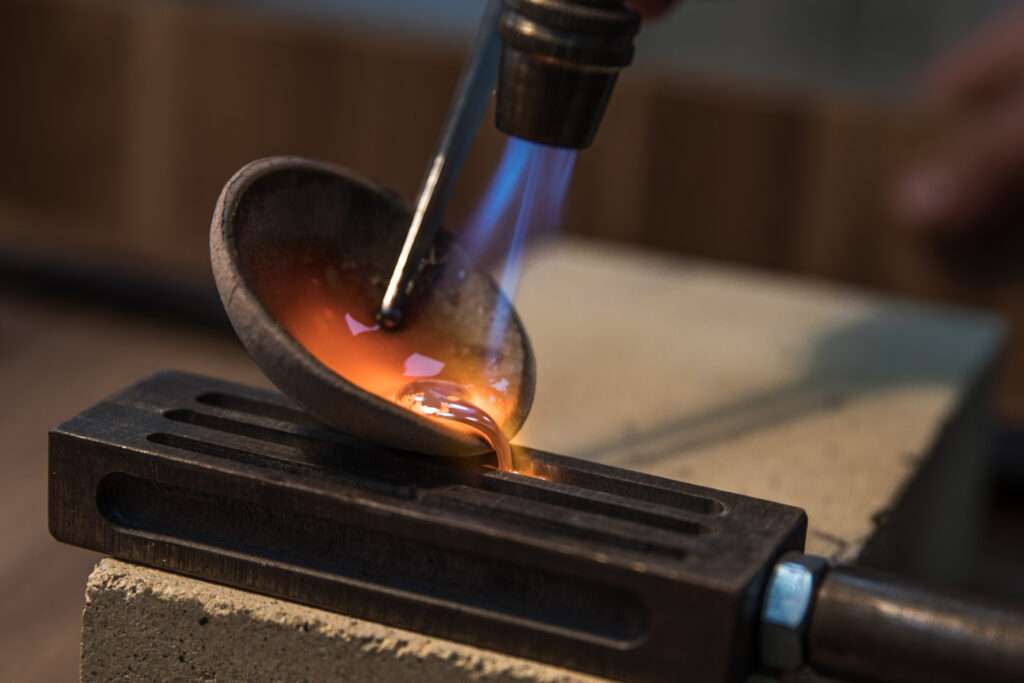
Fire Safety Advantages of Steel
Noncombustible nature of steel
A noncombustible material is one that will resist ignition and won’t support combustion even when exposed to high temperatures. In simpler terms, noncombustible materials will not burn. Steel is classified as a noncombustible material, making it a superior choice for building construction from a fire safety standpoint. Unlike wood, which readily ignites and fuels a fire’s spread, steel structures remain stable and largely intact during a fire event. This characteristic of steel plays a vital role in:
Enhancing building fire safety: By using noncombustible steel framing and components, the overall fire resistance of a building is significantly improved. This delays the spread of flames within the structure, buying precious time for occupants to evacuate safely.
Mitigating fire damage: Since steel doesn’t burn or contribute fuel to the fire, the extent of fire damage to the building structure itself is significantly reduced. This can minimize repair costs and reconstruction time after a fire incident.
Fire safety is paramount in any building construction project. Building codes mandate specific fire resistance ratings for various building types and components. Steel, with its inherent noncombustible properties, allows for achieving these fire safety requirements effectively.
Improved occupant and firefighter safety
The noncombustible nature of steel translates into significant safety benefits for both building occupants and firefighters during a fire:
- Enhanced occupant safety: Steel buildings provide a greater degree of fire protection for occupants due to their ability to withstand fire for extended periods. This allows for more time for safe evacuation in the event of a fire. Steel’s structural stability during a fire also reduces the risk of collapse, further enhancing occupant safety.
- Improved firefighter safety: The stability and fire resistance of steel buildings offer a safer environment for firefighters battling a blaze. Steel structures are less likely to collapse unexpectedly, allowing firefighters to focus on extinguishing the flames with greater confidence. Additionally, the minimal smoke generation from steel during a fire can improve visibility for firefighters within the burning building.
Potential reduction in fire insurance costs
The superior fire resistance of steel buildings can translate into tangible economic benefits for property owners. Due to the lower fire risk associated with steel construction, many insurance companies offer lower fire insurance premiums for steel buildings compared to wood structures. This ongoing cost saving can add up significantly over the lifespan of the building. When considering building costs, it’s important to look beyond the initial investment and factor in the long-term benefits, including potential insurance cost reductions associated with fire safety.

Design Flexibility and Construction Benefits of Steel
Design versatility of steel
Beyond its exceptional strength and durability, steel offers architects and engineers remarkable design flexibility compared to wood. Here’s a breakdown of some key advantages:
- Wider spans and open floor plans: Steel’s superior strength allows for the creation of wider spans compared to wood framing. This translates into expansive, column-free interior spaces, ideal for warehouses, factories, and commercial buildings. Open floor plans offer greater design freedom and can be easily adapted to accommodate changing needs within the building.
- Unique architectural features: Steel’s malleability and ability to be formed into various shapes allows for the creation of innovative and visually striking architectural features. Curved roofs, soaring arches, and intricate facades are all achievable with steel construction, pushing the boundaries of design and aesthetics.
- Modern aesthetic appeal: Modern architecture often embraces the clean lines, industrial feel, and inherent strength conveyed by exposed steel structures. Steel buildings can be designed to be sleek and contemporary, or incorporate traditional design elements with a modern twist. This versatility allows architects to create buildings that are both functional and aesthetically pleasing.
Faster construction times
Steel construction offers significant advantages in terms of construction speed compared to wood framing. Here’s why:
- Prefabricated components: Steel building components can often be pre-fabricated off-site in a controlled environment. This allows for precise manufacturing and quality control, ensuring a perfect fit during assembly. Prefabrication significantly reduces the time and labor required for on-site construction.
- Faster on-site assembly: Prefabricated steel components are typically lightweight and easy to assemble on-site using bolts or welding techniques. This streamlined process reduces reliance on skilled labor for complex on-site carpentry work, leading to faster completion times.
The benefits of faster construction times are multifaceted:
- Reduced construction costs: Faster construction translates to lower overall project costs. Labor costs are minimized, and the building is completed and ready for use sooner, allowing occupants to begin generating revenue or utilizing the space.
- Earlier occupancy: For businesses or organizations awaiting the completion of a new building, faster construction with steel allows them to occupy the space sooner. This translates to earlier revenue generation, improved operational efficiency, or quicker access to essential services housed within the building.
Reduced construction waste
The use of prefabricated steel components in construction offers a significant advantage in terms of waste reduction:
- Precise manufacturing: Prefabrication allows for precise cutting and shaping of steel components off-site. This minimizes on-site waste generated from scraps and miscalculations during traditional wood framing.
- Efficient use of materials: Steel manufacturers strive for efficient use of materials during the prefabrication process. This reduces overall material consumption compared to on-site wood framing, where potential for cutting errors and waste generation is higher.
Reduced construction waste translates to environmental benefits. Less waste means fewer resources are used and less ends up in landfills. This aligns with growing concerns about sustainable construction practices and resource conservation.
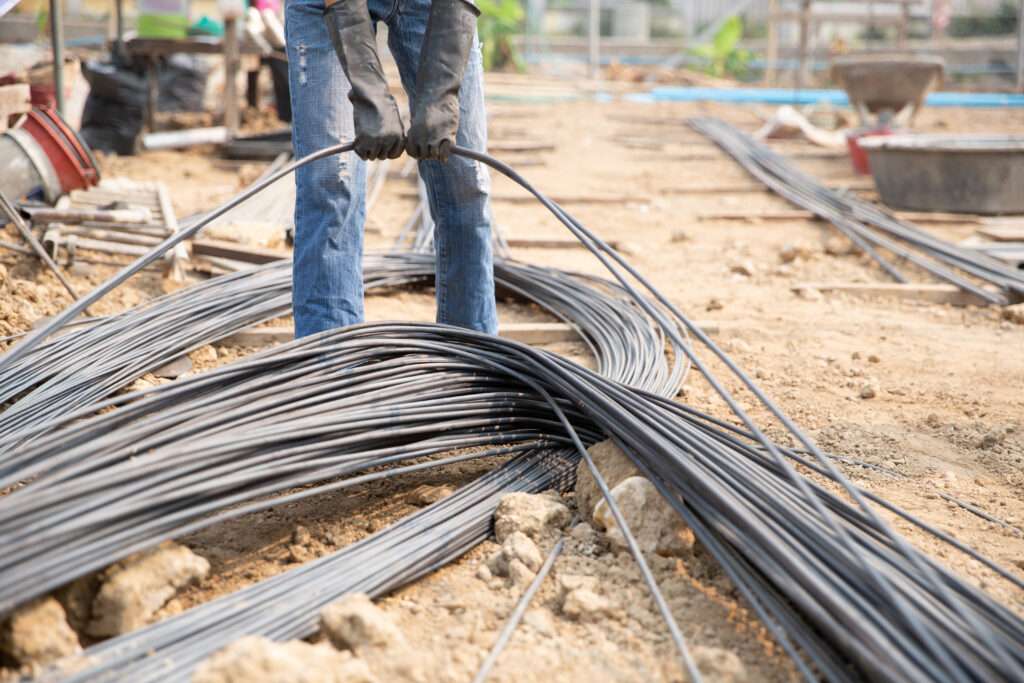
Sustainability Considerations of Steel
Recyclability of steel
Steel stands out as one of the most recyclable construction materials globally. Unlike many other materials, steel retains its inherent strength and properties even after multiple recycling cycles. The steel recycling process is remarkably efficient:
- Collection: Scrap steel from various sources, including demolition projects, manufacturing processes, and end-of-life steel products, is collected and sorted.
- Processing: Collected steel is shredded into manageable pieces and undergoes rigorous cleaning to remove contaminants like paint, oil, or other materials.
- Melting: Cleaned steel scrap is melted in a furnace at extremely high temperatures, transforming it back into a molten liquid.
- Refining: The molten steel may undergo further refining processes to remove impurities and achieve the desired chemical composition for its intended reuse.
- Manufacturing: The refined molten steel is then cast into new shapes, such as ingots or slabs, which can be used to manufacture various steel products, including construction components.
The environmental benefits of steel recycling are significant:
- Reduced reliance on virgin resources: By utilizing recycled steel, the demand for extracting new iron ore and other raw materials from the earth is minimized. This conserves natural resources and reduces the environmental impact of mining operations.
- Lower energy consumption: Steel recycling requires significantly less energy compared to the process of creating steel from virgin materials. This translates to a smaller carbon footprint associated with steel production.
Long lifespan reduces need for replacement
As previously discussed, steel buildings boast exceptional lifespans, often exceeding 50 years with proper maintenance. This translates to a significant sustainability advantage:
- Reduced demolition waste: The long lifespan of steel buildings reduces the need for frequent demolition and reconstruction projects. This minimizes the generation of construction waste that ends up in landfills.
- Lower resource consumption: By extending the lifespan of existing buildings, the need for constructing new buildings using fresh resources is diminished. This conserves valuable resources like lumber, concrete, and even steel itself, further contributing to environmental sustainability.
Potential for energy-efficient design
Steel structures offer the flexibility to incorporate various features that enhance a building’s energy efficiency:
- Reflective roofing: Steel roofs can be designed with reflective coatings or integrated with lightweight, pre-painted metal panels that reflect sunlight and heat radiation. This helps to reduce the heat gain within the building, lowering cooling costs during summer months.
- Daylight harvesting: Large expanses of strategically placed windows in steel buildings can maximize natural daylight penetration, reducing reliance on artificial lighting during the day. This not only saves energy but also improves occupant well-being with access to natural light.
- Steel framing compatibility: Steel framing integrates well with modern building insulation materials and energy-efficient building envelope systems. This allows for superior thermal performance of the building, reducing overall energy consumption for heating and cooling.

Cost Considerations
When evaluating building materials, it’s crucial to consider not just the initial construction cost, but also the long-term financial implications. This is where the concept of life-cycle cost comes into play.
Initial cost vs. life-cycle cost
Life-cycle cost encompasses the total financial burden associated with a building over its entire lifespan. It factors in three key elements:
- Initial construction cost: This includes the cost of materials, labor, permits, and other expenses incurred during the building process.
- Maintenance costs: These are the ongoing expenses associated with repairs, replacements, and preventative maintenance required to keep the building operational and in good condition throughout its lifespan.
- Lifespan: This refers to the expected duration for which the building remains structurally sound and functionally usable before requiring major renovations or even demolition.
While steel buildings may have a higher initial construction cost compared to wood structures due to the material itself and potential prefabrication processes, they offer significant advantages in terms of life-cycle cost:
- Lower maintenance costs: Steel’s inherent resistance to rot, decay, and insect infestation translates to significantly lower maintenance requirements compared to wood. Steel buildings typically require minimal periodic maintenance compared to the ongoing upkeep needed for wood structures to address issues like rot repair, insect control, or repainting.
- Longer lifespan: As previously discussed, steel buildings boast exceptional lifespans, often exceeding 50 years with proper care. In contrast, wood structures typically require major renovations or even complete replacements within 20-30 years due to deterioration factors.
When these factors are considered, steel buildings can often prove to be a more cost-effective choice in the long run. The lower maintenance needs and extended lifespan of steel buildings can offset the potentially higher initial cost, resulting in a lower overall life-cycle cost for the building owner.
Potential for lower insurance premiums
As discussed earlier, the superior fire resistance of steel buildings can translate into tangible economic benefits:
- Reduced fire risk: The noncombustible nature of steel and its ability to withstand fire for extended periods significantly reduce the overall fire risk associated with a steel building.
- Lower insurance premiums: Many insurance companies recognize the inherent fire safety advantages of steel construction and offer lower fire insurance premiums for steel buildings compared to wood structures. This ongoing cost saving can add up significantly over the lifespan of the building, further contributing to the overall cost-effectiveness of steel as a building material.
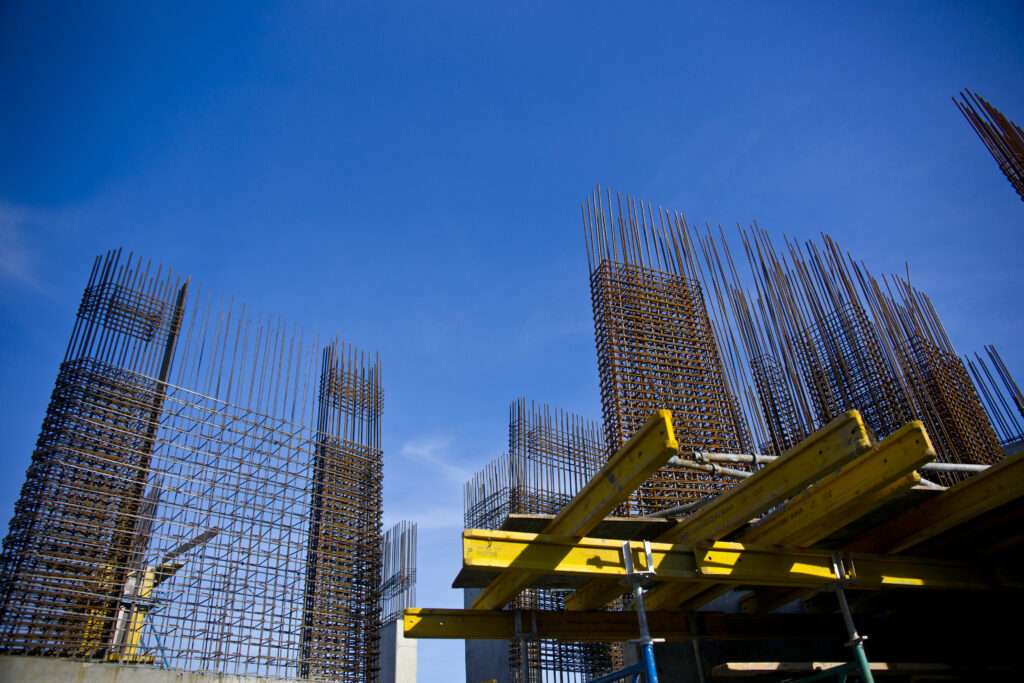
Applications Where Steel Buildings Shine
Steel’s exceptional strength, durability, flexibility, and cost-effectiveness make it a compelling choice for a wide range of building applications. Here are some areas where steel buildings excel:
- Warehouses and industrial facilities: Steel’s ability to create large, open floor plans and withstand heavy loads makes it ideal for storing and handling industrial equipment and materials.
- Factories and manufacturing plants: Steel’s strength and adaptability allow for the creation of functional production spaces with clear spans and the ability to integrate overhead cranes or other equipment.
- Agricultural buildings: Steel structures offer weather resistance, durability, and minimal maintenance needs, making them perfect for barns, storage facilities, and equipment shelters on farms.
- Commercial structures: Steel buildings can be aesthetically pleasing and highly functional for commercial applications like retail stores, showrooms, and office buildings.
- Public facilities: Steel’s strength and resilience make it suitable for public buildings like sports complexes, convention centers, and transportation hubs.
- Aircraft hangars: Steel’s ability to create large, unobstructed spaces is crucial for accommodating airplanes of various sizes within hangars.
- Prefabricated buildings: Steel’s suitability for prefabrication allows for rapid construction of temporary or permanent structures for various purposes.
Conclusion
This exploration has comprehensively demonstrated the numerous advantages of steel buildings compared to wood structures. Steel’s exceptional strength, durability, and resistance to natural disasters translate into safer, longer-lasting buildings. The inherent fire safety of steel provides superior protection for occupants and firefighters. Design flexibility with steel allows for innovative and visually striking architectural features. Faster construction times and reduced waste on-site contribute to both cost-effectiveness and environmental responsibility. While the initial cost of steel might be higher, lower maintenance needs and a significantly longer lifespan lead to a compelling life-cycle cost advantage. In conclusion, steel’s unmatched combination of strength, safety, flexibility, sustainability, and cost-effectiveness solidifies its position as the superior choice for a vast array of construction projects.

